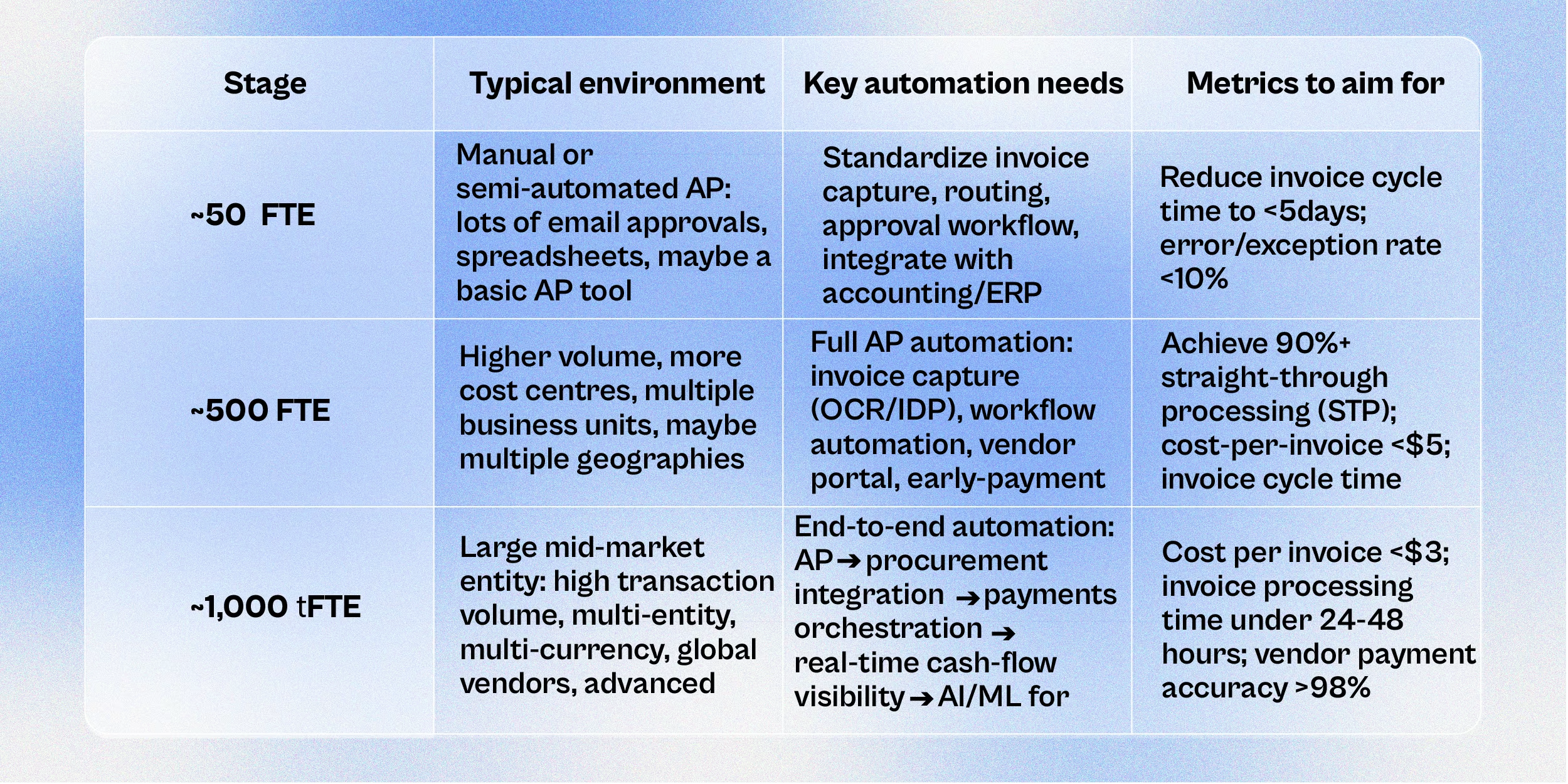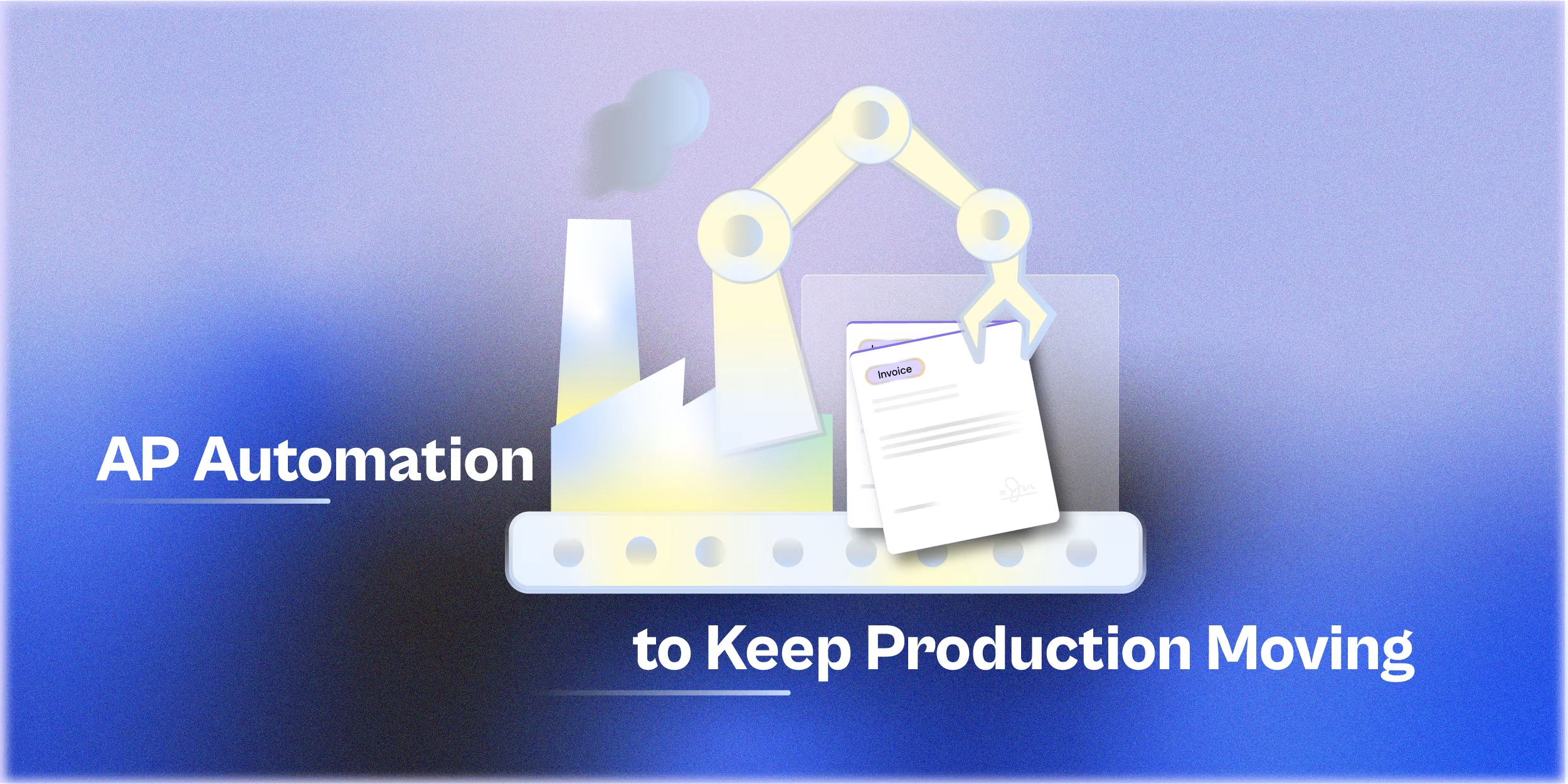When a company grows quickly, the finance function often becomes the bottleneck. What worked at ~50 FTE (full‑time employees) - spreadsheets, manual invoice approvals, a small AP team doesn’t scale to ~500 or ~1,000 FTE without major friction. Automation becomes not a “nice‑to‑have” but a necessity.
This article walks through three growth stages (50 → 500 → 1,000 FTE), identifies key automation inflection points (especially in the AP / invoice‑to‑pay process), surface data to support planning, and give CFO‑focused benchmarks and actionable guidance.
The Growth‑Challenge for Finance Operations
As you scale headcount and transactions, three major issues hit finance teams: rising volume, increasing complexity, and shrinking visibility.
1. Volume explosion
With more people, locations, vendors, and procurement activity, invoice volume tends to rise rapidly. Without automation, manual processing hours balloon. For example, one firm notes that “manual invoice processing is unsustainable” as growth accelerates.
2. Complexity and inconsistency
At ~50 FTE you may have one site, one AP queue, one general ledger. At ~500–1,000 FTE you may have multiple cost centres, geographies, business units, varied vendor terms, and higher compliance/regulation demands. Rolling manual systems across that is risky.
3. Lack of visibility and control
Manual systems often lack real‑time dashboards, approval audit trails, or robust exception handling.
Together these bottlenecks erode vendor relationships, increase risk of late payments, and consume headcount that should be focused on strategic finance tasks.
Automation Milestones Across the Growth Stages
Here’s how automation needs evolve as you move from ~50 to ~500 to ~1,000 FTE.

Strategic Implications for CFOs & Finance Leaders
For finance leadership, growth means revisiting strategy, systems and change‑management early. Here are key implications:
Start automation planning early
While ~50 FTE may feel low‑urgency, the decision window for selecting scalable tools is best made before you reach the bottleneck. Delaying means you’ll be reacting under pressure.
Choose scalable platforms, not “band‑aid” solutions
Many entry‑level systems may support small volume but not scale to 1,000 FTE+ workflows. Look for cloud‑native, modular solutions designed for growth.
Integrate AP automation with broader finance/ERP ecosystem
At a larger scale, AP cannot be siloed. Integration with procurement, general ledger, cash‑flow analytics and payments is critical. The shift is from “invoice in → payment out” to “spend‑to‑pay” orchestration.
Treat change‑management and process redesign as first‑order tasks
Process redesign often gets neglected when focus is on tools. At scale, standardizing workflows, vendor onboarding, exception handling and roles is vital.
Use data and metrics to drive the conversation
Translate automation benefits into financial metrics (cost per invoice, days payable outstanding, error rate, vendor discount capture) so CFOs and the executive team can see ROI.
ROI Benchmarks & Business Case Table
Here’s a table to help build or validate your business case for AP automation across growth

Scaling from ~50 FTE to ~500 and beyond is exciting but finance functions that don’t evolve will become drag on growth. Automation of key workflows (especially AP/invoice‑to‑pay) allows finance teams to keep pace, stay lean and deliver strategic value rather than firefighting daily issues.
If you’d like to see how Finofo’s AP automation capabilities can scale across growth stages, schedule a demo today.







